 November 10, 2016 John E. Ross, KD8IDJ, Editor
| |||||||||
Amateur Radio "Uniquely Situated" to be at Leading Edge Again, Conferees Told The dawn of so-called "smart" -- or cognitive -- radio has presented Amateur Radio with an opportunity to regain the leading edge in radio technology in the near future. It will also alter our view of "If you put the smarts in the radio, what can possibly go wrong?" quipped Thompson, pointing to an example that demonstrated how sufficiently complicated technology is also more likely to fail.
Thompson said cognitive radio technology will alter the paradigm of treating spectrum as if it were land. "Spectrum is immediately reusable," she said, "and land is not." Regulation and spectrum allocation have been necessary to manage interference among services, but smart radios can avoid collisions among users, she said. "[I]t hasn't been until fairly recently that we've been able to inexpensively and quickly reconfigure a radio," she said. Thompson's Phase 4B project will take maximum advantage of cognitive radio technology, which can -- among other things -- determine an optimal clear frequency, mode, and path on the fly, transparently, and without human intervention. McGwier called the computer "the tidal wave that has swept over Amateur Radio." And, he predicted, "It is going to bring us back to becoming technical innovators." He said radio amateurs "are uniquely situated to be the leading edge in radio again." McGwier said the innovation needed in Amateur Radio will come about through what he called "Amateur Radio freedom," that encourages experimentation and thinking outside the box. "It's the ultimate democratic assignment of frequencies in the world," he said.
He painted a picture of intelligent radio technology that will operate like the human brain. "It's going to design the radio on the fly, from scratch, without a subject-matter expert involved," he said. "The radio will be done by artificial intelligence, from beginning to end. The object becomes not the radio, but the activity it allows." Responding to a question, McGwier conceded that today's hams may balk at this sort of paradigm shift, since it's far removed from how most Amateur Radio communication takes place today. But he said embracing smart radio technology is what will attract a younger generation of new hams. "We need to not limit what these kids can do with Amateur Radio," he maintained. "They are going to outdo us, if we only allow them. We can't limit them, because this is a fundamental paradigm shift." Predicted McGwier: "You will not recognize your world in 10 years." The HamRadioNow presentation also is available in audio format, and a highly condensed 11-minute synopsis is available on YouTube. -- Thanks to Gary Pearce, KN4AQ/HamRadioNow Naval Academy Students Planning CubeSat with HF Uplink Students at the US Naval Academy in Annapolis, Maryland, are planning an Amateur Radio CubeSat -- dubbed HFSAT -- that would carry an HF transponder as a primary payload as well as 2-meter APRS as a secondary mission when power is available. The 1.5 U CubeSat will have a linear uplink at 21.4 MHz and a downlink at 29.42 MHz.
"HFSAT will continue the long tradition of small amateur satellites designed by students and hams at the US Naval Academy," Bruninga told ARRL. The uplink will be at 21.4 MHz and downlink at 29.42 MHz, similar to [earlier] Mode K HF satellites. No launch has yet been identified." Bruninga said HFSAT would be gravity gradient-stabilized by its full-sized, 10-meter, thin-wire, half-wave dipole. Other unique features of HFSAT include its APRS telemetry command-and-control capability. "For VHF the students have modified a popular Byonics.com MTT4B all-in-one APRS Tiny-Track4 module for telemetry, command, and control to fit on a single 3.4-inch square card inside the CubeSat, that they will use for this and for future CubeSats," Bruninga said. The students are working with Bill Ress, N6GHZ, on the HF transponder card, which will provide a bandwidth of 30 kHz, employing an inverting transponder to minimize Doppler. Todd Bruner, WB1HAI, will be the HFSAT control operator.
Bruninga said the HF transponder is a follow-on from the USNA's existing PSAT 10-meter PSK31 transponder, still operational. HFSAT's telemetry downlink will be captured via stations in the worldwide ground-station network. The packet link is a secondary mission compared to the HF transponder on this spacecraft. Once HFSAT is in space, Bruninga recommended using a vertical HF antenna, because it would match well with the antenna patterns and geometry of Low Earth Orbit (LEO) satellites. "When low on the horizon, both the satellite and the user antennas are in their main lobes, providing maximum gain at the distant horizons," Bruninga said. "At the higher elevations, the satellite is 6 dB to 10 dB closer, significantly making up for the reduced antenna pattern geometry." He said hams would be able to use "simple, manual" pass-prediction tools, much as they used the old Oscar Locator in the early years of Amateur Radio satellites. The Doctor Will See You Now! "Anderson Powerpole Connectors, and Antenna Polarization" are the topics of the latest (November 3) episode of the "ARRL The Doctor is In" podcast. Listen...and learn!
Every 2 weeks, your host, QST Editor-in-Chief Steve Ford, WB8IMY, and the Doctor himself, Joel Hallas, W1ZR, will discuss a broad range of technical topics. You can also e-mail your questions to doctor@arrl.org, and the Doctor may answer them in a future podcast. Enjoy "ARRL The Doctor is In" on Apple iTunes, or by using your iPhone or iPad podcast app (just search for "ARRL The Doctor is In"). You can also listen online at Blubrry, or at Stitcher (free registration required, or browse the site as a guest) and through the free Stitcher app for iOS, Kindle, or Android devices. If you've never listened to a podcast before, download our beginner's guide. National Parks on the Air Update A couple of milestones were reached in the ARRL National Parks on the Air (NPOTA) program last week. Washington, DC-based Activator Paul Stoetzer, N8HM, became the first amateur to activate from all 28 NPOTA units in DC, completing that feat on November 7.
These are two examples of the efforts that Activators are putting forth to achieve 1 million total NPOTA contacts by year's end. Activity remains strong, with more than 25,000 contacts uploaded to Logbook of The World every week. Fifty-four activations are scheduled for November 10-16, including Theodore Roosevelt Birthplace National Historic Site in New York, and Dry Tortugas National Park in Florida. Details about these and other upcoming activations can be found on the NPOTA Activations calendar. Keep up with the latest NPOTA news on Facebook. Follow NPOTA on Twitter (@ARRL_NPOTA). US JOTA 2016 "Flash Numbers" Show Participation was Up According to the US Jamboree on the Air (JOTA) 2016 "flash numbers," participation swelled in the annual Scouting event this fall. JOTA Coordinator Jim Wilson, K5ND, released the preliminary report last weekend. "After sifting through the reports and eliminating a few duplicates along with reports from countries outside the US, we've compiled the early flash numbers," Wilson said. "The great news is that there have been some excellent increases in participation."
After station reports slumped last year, the Boy Scouts made a big push that included prize drawings to encourage participants to file post-JOTA reports. Station registrations dropped by 15% this fall to 295. Jamboree on the Internet (JOTI) registrations were up from 100 last year, to 505 this time around. The stats showed that the number of Amateur Radio operators was up by 14% to 1,120, but they used fewer radios -- down 25% in 2016 to 631. "The next steps are to do further analysis and finalize the report for full publication," Wilson said. "We'll be sifting through the written reports and suggestions, finding memorable quotes, and photos/videos, as well as searching for other insight. We know for starters that there was far more interest this year in JOTA-JOTI from Scout leaders and parents, based on the new 2016 Arrow of Light award requirement." Wilson said he expects to have the final report out by month's end. The grand prize winner of the drawing for an Icom ID-51A Plus, donated by Icom America, was Leroy Wignot, WA4OTD. Austrian Moonbounce Enthusiast Demonstrates Success with Small-Scale Setup Hannes Fasching, OE5JFL, of Braunau am Inn, Austria, has demonstrated that you don't need a huge antenna system to operate EME (moonbounce) successfully. Fasching fired up for the October 22-23 weekend of the ARRL EME Contest, using a small horn antenna on 1.2 GHz.
"Because of other commitments I had only a few hours to be QRV in the first part of the ARRL EME Contest," he said in a Moon-Net post on October 26. "As tests with my recently built 23-centimeter horn antenna were promising, I decided to give it a try to work some stations." Fasching placed the horn on his balcony with an 80 W solid-state amplifier. Operating WSJT, he logged contacts with Switzerland, Russia, Germany, and the Czech Republic. He also heard stations in the Netherlands, Finland, Denmark, and Italy on digital modes and in the UK, Czech Republic, Denmark, and Italy on CW. Fasching, who also has a 7.3-meter homemade dish, has uploaded recordings of some EME signals to his website, along with the results of tests with his small system. Quest Continues for 1 kW Power Privileges in Australia On the Wireless Institute of Australia (WIA) VK1WIA National News, WIA Director Roger Harrison, VK2ZRH, recently remarked on efforts to raise the Amateur Radio power limit to 1 kW there. A 1 kW limit was trialed in 2012-2013, but Harrison said he does not expect the Australian Communications and Media Authority (ACMA) to repeat that test.
"In fulfilling that responsibility, the ACMA needs to know where possibly harmful transmitter systems are located and that such locations are recorded on a license," Harrison continued. "With that understanding, the [WIA] Spectrum Strategy Committee is working with ACMA to develop suitable procedures under which amateurs interested in running high power can make an application that meets the ACMA's technical and regulatory requirements. Talks are continuing." -- Thanks to Southgate Amateur Radio News; WIA Reminder: NASA CubeSat Launch Initiative Application Deadline is November 22 The application deadline to take part in NASA's CubeSat Launch Initiative (CSLI) is Tuesday, November 22. NASA has invited accredited education institutions, nonprofit organizations, and NASA centers to join the adventure and challenge of space, while helping the agency to achieve its exploration goals. Many research CubeSats launched as part of the CSLI have carried Amateur Radio payloads.
Free Cubes in Space⢠Program Offers Opportunity for Youth to Put Experiments into Space The free Cubes in Space⢠program provides students ages 11 to 18 an opportunity to design and compete to launch an experiment into space at no cost. Cubes in Space is offered by idoodledu inc, in partnership with the NASA Goddard Space Flight Center's Wallops Flight Facility, the Colorado Space Grant Consortium, and the NASA Langley Research Center.
There are two launch opportunities in 2017 -- into space via sounding rocket from Wallops Island or via high-altitude balloon, launched from NASA's Columbia Scientific Balloon Facility in New Mexico. The registration deadline is January 6, 2017. E-mail or visit the Cubes in Space website for more information, or call (888) 735-4565. -- Thanks to AMSAT News Service via NASA Latest Edition of the ITU Radio Regulations is Available Online What the International Telecommunication Union (ITU) calls "The global treaty behind your mobile communications" -- the ITU Radio Regulations (2016 edition) -- now is available online and at no cost via the ITU website. Published in ITU's six official languages, the new edition of the Radio Regulations is also available for purchase in hard copy format and as a multilingual DVD.
Delegates to the World Radiocommunication Seminar (WRS-16) in Geneva this December will mark the occasion. -- Thanks to ITU (media release) DX Notes from All Over The ZL7G DXpedition to Chatham Island wrapped up on November 9 after logging more than 42,000 contacts, including nearly 3,000 of them on RTTY. The DXpedition team has dismantled stations and antennas and plans to depart the island on November 19. Chatham Island was number 95 on the ClubLog DXCC Most Wanted List.
"We continued with RTTY (2,900 QSOs now) and had hoped for one last grey line on 160," a team news release said. "However, thunderstorms over New Zealand and Australia meant that 160-meter QSOs on the morning of [November 9] were hard to come by." Earlier, the team had complained of "dire HF conditions," although things did improve. ZL7G recorded nearly 10,400 contacts with North American stations, more than 16,400 with stations in Europe, and nearly 14,000 with Asian stations. The contact count with stations in Africa and Asia were only in the triple digits. Complete results of the DXpedition are available on the ClubLog website. Rebounding from his aborted "Cows Over the World" DXpedition, Tom Callas, KC0W, commenced a CW-only operation from the Philippines on November 8, as 4I7COW. This marks the first time the 4I7 prefix has been used. The Minnesota DXer plans to focus on 160 meters. He will operate from 4I7COW until November 22. Callas was forced to abruptly cancel the rest of his "Cows Over the World" Pacific DXpeditions earlier this fall, after his belongings were stolen in Kiribati.
After he returns to the US, Callas plans to travel to Equatorial Guinea, where he will apply in person for 3C and 3C0 call signs. Given the complexity of the Equatorial Guinea licensing process, Callas has said he believes it's best to make the preliminary trip to submit all 20 documents required for each call sign and increase his chances of getting the ones he wants. He plans to activate Annobon (3C0) and Equatorial Guinea (3C) in January for at least 25 days from each entity. He may do some SSB operation too, but no digital modes. Annobon is number 35 on the ClubLog DXCC Most Wanted List, while Equatorial Guinea is number 43. Peripatetic DXer Zorro Miyazawa, JH1AJT, will be part of a team that will activate Myanmar (XZ), November 15-22. Joining him will be Champ Muangamphun, E21EIC; Franz Langner, DJ9ZB, and Madison Jones, W5MJ. The primary purpose of the trip is to support the Olympic and Paralympic Committee in Myanmar. Activity will be on 80 through 10 meters on CW, SSB, and RTTY, with two stations. The call sign has not yet been announced. Myanmar is number 49 on the ClubLog DXCC Most Wanted List. Ken Opskar, LA7GIA, is heading to the Central African Republic, hoping to get on the air as TL8AO on November 11. He'll be there until November 22, running 400 W to a variety of antennas, mostly on CW, on 80 through 10 meters. He will upload his log to Logbook of The World.
Yath Yoshikawa, JG2MLI, will head back to the Japanese Polar Research Syowa Station on East Ongul Island to operate with the commemorative call sign 8J60JARE, marking the 60th anniversary of the Japanese Antarctic Research Expedition (JARE) from January 2017 until January 2018. He will operate SSB, CW, RTTY, and digital modes on 40 through 10 meters and will post his logs to Club Log. CW operator Tony Wanschura, KM0O, will be on the air November 19-28 -- including the CQ World Wide DX CW Contest -- from Vientiane, Laos, as XW0YO. He'll be on CW and SSB (but not RTTY) on 160 through 10 meters. "Fortunately, in this time of low solar activity and weak signals, this particular QTH has virtually zero noise," he said. -- Thanks to KC0W, The Daily DX, DX-World, and the ZL7G team Hurricane Watch Net Honors Bermuda Radio Amateur The Hurricane Watch Net (HWN) has recognized one of its longtime members, Antony "Tony" Siese, VP9HK. HWN Manager Bobby Graves, KB5HAV, announced on October 20 that the net would confer upon Siese the title of "Honorary Member," in recognition of his 31 years of service. Graves said Siese is the first non-manager to be named an Honorary Member.
VP9HK joined the HWN in 1985, although, he said, he took a "sabbatical" last year. In 2003, his reports during Hurricane Fabian gave forecasters at the National Hurricane Center valuable ground-truth information and insight as to what the storm was doing in Bermuda, Graves said, earning Siese the Message in a Bottle Award from W4EHW (now WX4NHC) for the 2003 Hurricane Season. "It is very rare for any individual to be so dedicated to an organization, especially as a volunteer," Graves said. "Tony, on behalf of the Hurricane Watch Net, thank you for all you have done and continue to do." Siese was first licensed in the UK as G4CIL in the 1970s. He's lived in Bermuda for more than 52 years. -- Thanks to the Hurricane Watch Net Getting it Right! In the story "Rule Making Petition to FCC Calls for Vanity Call Sign Rule Changes" in The ARRL Letter for November 3, 2016, the correct number of the Petition for Rule Making is RM-11775. Interested parties may comment using the FCC Electronic Comment Filing System (ECFS). Comments are due within 30 days of the October 26 posting date. In Brief...
ARISS Packet System on Boa
The K7RA Solar Update Tad Cook, K7RA, Seattle, reports: At 0002 UTC on November 9, this geomagnetic warning was distributed by Australia's Space Forecast Centre: Increased geomagnetic activity expected due to coronal hole high-speed wind stream and possible glancing blow from CME [coronal mass ejection] associated with November 5 filament on November 9-10 2016. The Centre said the forecast for November 10 is "Active." But the USAF Ap forecast predicts the disturbance will occur perhaps a few days later. The USAF forecast was issued about 21 hours later than the Australian forecast.
Predicted solar flux is 80 on November 10-12; 85 on November 13-14; 90 on November 15-16; 78 on November 17-18; 77 and 75 on November 19-20; 78 on November 21-22; 79 on November 23-25; 78 on November 26; 77 on November 27-28; 76 on November 29-30; 77 on December 1-3; 75 on December 4-5, and 78 on December 6-15. Sunspot numbers for November 3 through 9 were 23, 25, 24, 23, 24, 0, and 12, with a mean of 18.7. The 10.7 centimeter flux was 75.6, 76.7, 76.7, 76.2, 76.5, 76.9, and 79.9, with a mean of 76.9. Estimated planetary A indices were 18, 5, 3, 5, 4, 3, and 7, with a mean of 6.4. Estimated mid-latitude A indices were 12, 3, 2, 4, 2, 2, and 5, with a mean of 4.3. Were you active in the ARRL November Sweepstakes (CW) last weekend? Send me a report of your observations.
. . . . . .
Just Ahead in Radiosport
See the ARRL Contest Calendar for more information. For in-depth reporting on Amateur Radio contesting, subscribe to The ARRL Contest Update via your ARRL member profile e-mail preferences. Upcoming ARRL Section, State, and Division Conventions
Find conventions and hamfests in your area.
. .
Subscribe to...
Free of charge to ARRL members...
| |||||||||
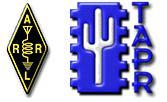 spectrum as a limited resource. Those points and others were part of a forward-looking, tag-team Sunday Seminar presentation, "Spectrum (It's the frequency crunch for real)," by Michelle Thompson, W5NYV, and Bob McGwier, N4HY, at the 2016 ARRL and TAPR Digital Communications Conference (
spectrum as a limited resource. Those points and others were part of a forward-looking, tag-team Sunday Seminar presentation, "Spectrum (It's the frequency crunch for real)," by Michelle Thompson, W5NYV, and Bob McGwier, N4HY, at the 2016 ARRL and TAPR Digital Communications Conference (
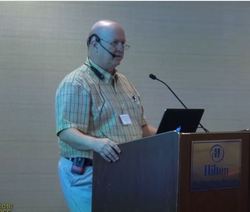
.jpg) "HFSAT is a small 1.5 U CubeSat that will demonstrate the viability of HF satellite communications as a back-up communication system using existing ubiquitous HF radios that are often a part of every amateur station," said USNA Instructor Bob Bruninga, WB4APR, who developed APRS. Bruninga said HFSAT would be similar to the 1990s-era RS-12/13 Russian Amateur Radio satellite.
"HFSAT is a small 1.5 U CubeSat that will demonstrate the viability of HF satellite communications as a back-up communication system using existing ubiquitous HF radios that are often a part of every amateur station," said USNA Instructor Bob Bruninga, WB4APR, who developed APRS. Bruninga said HFSAT would be similar to the 1990s-era RS-12/13 Russian Amateur Radio satellite.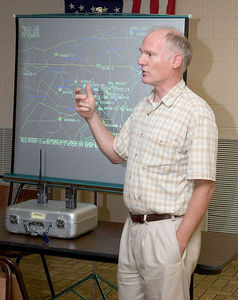
.jpg) Sponsored by
Sponsored by 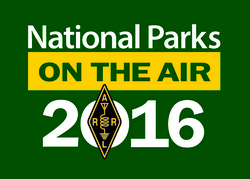 Pete Kobak, K0BAK, also deserves credit for activating all of the NPS units in the Eastern Pennsylvania Section. These include some difficult urban units in Philadelphia.
Pete Kobak, K0BAK, also deserves credit for activating all of the NPS units in the Eastern Pennsylvania Section. These include some difficult urban units in Philadelphia..jpg) The total number of Scouts taking part was up by 51% to 10,761, while the visitor total was up by 30% to 6,668. Perhaps the best news was an increase in the number of stations reporting -- up by 28% to 267 this year, just short of the record 271 in 2013.
The total number of Scouts taking part was up by 51% to 10,761, while the visitor total was up by 30% to 6,668. Perhaps the best news was an increase in the number of stations reporting -- up by 28% to 267 this year, just short of the record 271 in 2013.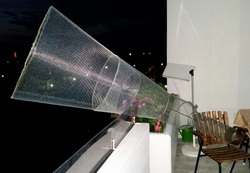
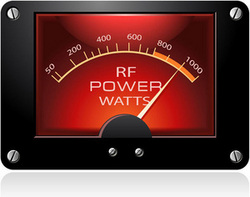 The central issue comes down to that of compliance with electromagnetic radiation standards in Australia," Harrison said, not what other countries may allow. He noted that radiocommunication regulation in Australia is embodied both in license conditions and in compliance with electromagnetic radiation standards, and ACMA has a responsibility to ensure that emissions from all radio transmitting systems do not expose the public to harm.
The central issue comes down to that of compliance with electromagnetic radiation standards in Australia," Harrison said, not what other countries may allow. He noted that radiocommunication regulation in Australia is embodied both in license conditions and in compliance with electromagnetic radiation standards, and ACMA has a responsibility to ensure that emissions from all radio transmitting systems do not expose the public to harm. CSLI provides CubeSat developers with a low-cost pathway to space, in order to conduct research that advances NASA's strategic goals in science, exploration, technology development, education, and operations. The initiative provides students, teachers, and faculty members with a chance to gain hands-on flight hardware development experience by designing, building, and operating small research satellites. NASA will announce its selections by February 17, 2017; selection does not guarantee a launch opportunity. Selected experiments are considered auxiliary payloads on NASA launches or for International Space Station deployment starting next year and continuing through 2020.
CSLI provides CubeSat developers with a low-cost pathway to space, in order to conduct research that advances NASA's strategic goals in science, exploration, technology development, education, and operations. The initiative provides students, teachers, and faculty members with a chance to gain hands-on flight hardware development experience by designing, building, and operating small research satellites. NASA will announce its selections by February 17, 2017; selection does not guarantee a launch opportunity. Selected experiments are considered auxiliary payloads on NASA launches or for International Space Station deployment starting next year and continuing through 2020.  Based on STEAM (science, technology, engineering, arts, and mathematics), the global education initiative enables students to learn about space exploration using innovative problem-solving and inquiry-based learning methods. Participants have access to resources that help prepare them to design and develop an experiment to be integrated into a small cube.
Based on STEAM (science, technology, engineering, arts, and mathematics), the global education initiative enables students to learn about space exploration using innovative problem-solving and inquiry-based learning methods. Participants have access to resources that help prepare them to design and develop an experiment to be integrated into a small cube.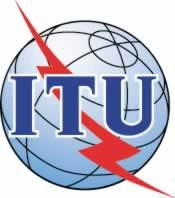 "Following the successful completion of World Radiocommunication Conference 2015, I am pleased to announce the issue of the ITU Radio Regulations, edition of 2016, which will come into force for all the signatory parties on 1 January 2017," said François Rancy, Director of the ITU Radiocommunication Bureau. Calling the treaty "an incredible success story," ITU Secretary-General Houlin Zhao noted that the global treaty upon which mobile communication and other uses of wireless technology internationally depend, will celebrate its 110th anniversary this year.
"Following the successful completion of World Radiocommunication Conference 2015, I am pleased to announce the issue of the ITU Radio Regulations, edition of 2016, which will come into force for all the signatory parties on 1 January 2017," said François Rancy, Director of the ITU Radiocommunication Bureau. Calling the treaty "an incredible success story," ITU Secretary-General Houlin Zhao noted that the global treaty upon which mobile communication and other uses of wireless technology internationally depend, will celebrate its 110th anniversary this year.
.jpg)
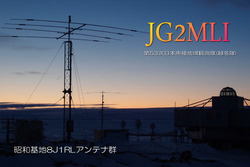
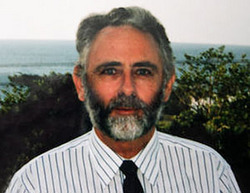
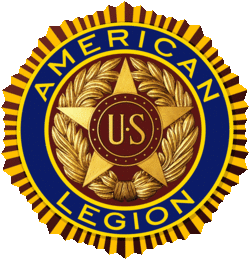 The American Legion Amateur Radio Club Sponsoring Veterans Day Special Event: American Legion members will honor fellow veterans with a special event on Veterans Day, Friday, November 11. The American Legion Amateur Radio Club (
The American Legion Amateur Radio Club Sponsoring Veterans Day Special Event: American Legion members will honor fellow veterans with a special event on Veterans Day, Friday, November 11. The American Legion Amateur Radio Club (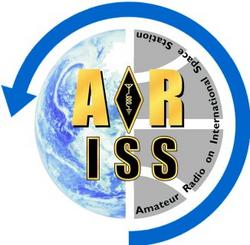 rd the ISS Switched to UHF Due to the recent failure of the Ericsson VHF radio in the ISS Columbus module, the Amateur Radio on the International Space Station (
rd the ISS Switched to UHF Due to the recent failure of the Ericsson VHF radio in the ISS Columbus module, the Amateur Radio on the International Space Station (.jpg) Papers Solicited for 2017 Eastern VHF/UHF/Microwave Conference Organizers for the 2017 Eastern VHF/UHF Microwave Conference have issued a first call for papers. The event will take place April 21-23, 2017, at Baymont Inn in Manchester, Connecticut. Papers on all VHF-and-up activities are invited, from operating, contesting, and propagation to antennas, amplifiers, low-noise preamps, homebrewing, microwaves, moonbounce, Arduinos, and more. Photos of projects are especially welcome. For more information,
Papers Solicited for 2017 Eastern VHF/UHF/Microwave Conference Organizers for the 2017 Eastern VHF/UHF Microwave Conference have issued a first call for papers. The event will take place April 21-23, 2017, at Baymont Inn in Manchester, Connecticut. Papers on all VHF-and-up activities are invited, from operating, contesting, and propagation to antennas, amplifiers, low-noise preamps, homebrewing, microwaves, moonbounce, Arduinos, and more. Photos of projects are especially welcome. For more information, 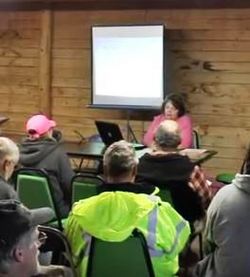 Video of Forum Explaining How Ham Radio Clubs Can Obtain Tax-Exempt Status Now Available: A
Video of Forum Explaining How Ham Radio Clubs Can Obtain Tax-Exempt Status Now Available: A (2).jpg) Changes Made to 60-Meter Allocations in Portugal and Finland: José E. Ribeiro Sá, CT1EEB, has reported on changes to Portugal's 60-meter allocation, which includes some of the existing discrete channels plus a new contiguous band. He said his just-renewed, 60-meter band license authorizes him to operate CW and SSB on 5,371.5 kHz and 5,403.5 kHz, as well as on 5,351.5 kHz to 5,366.5 kHz. He said his license specifies no power limit. In Finland, Jari Jussila, OH2BU (aka OH2P on 60 meters), reported that radio amateurs there should gain access to 5,351.5-5,366.5 kHz, starting on January 1, with 15 W EIRP. The 60-meter band in Finland is divided into sub-bands by mode bandwidth. Amateur Radio is secondary on all 60-meter allocations. -- Thanks to Southgate Amateur Radio News
Changes Made to 60-Meter Allocations in Portugal and Finland: José E. Ribeiro Sá, CT1EEB, has reported on changes to Portugal's 60-meter allocation, which includes some of the existing discrete channels plus a new contiguous band. He said his just-renewed, 60-meter band license authorizes him to operate CW and SSB on 5,371.5 kHz and 5,403.5 kHz, as well as on 5,351.5 kHz to 5,366.5 kHz. He said his license specifies no power limit. In Finland, Jari Jussila, OH2BU (aka OH2P on 60 meters), reported that radio amateurs there should gain access to 5,351.5-5,366.5 kHz, starting on January 1, with 15 W EIRP. The 60-meter band in Finland is divided into sub-bands by mode bandwidth. Amateur Radio is secondary on all 60-meter allocations. -- Thanks to Southgate Amateur Radio News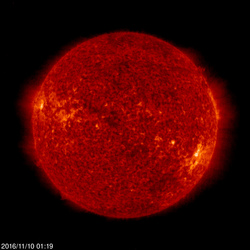 Predicted planetary A index is 8, 14, 26, 20, 12, and 8 on November 10-15; 5 on November 16-18; 8, 15, 54, 42, and 24 on November 19-23; 18, 22, 18, 12, and 10 on November 24-28; 8 on November 29-30; 5 on December 1-3; 8, 20, and 8 on December 4-6; 10, 12, and 20 on December 7-9; 18, 10, and 8 on December 10-12; 5 on December 13-15; 8, 15, 54, 42, and 24 on December 16-20.
Predicted planetary A index is 8, 14, 26, 20, 12, and 8 on November 10-15; 5 on November 16-18; 8, 15, 54, 42, and 24 on November 19-23; 18, 22, 18, 12, and 10 on November 24-28; 8 on November 29-30; 5 on December 1-3; 8, 20, and 8 on December 4-6; 10, 12, and 20 on December 7-9; 18, 10, and 8 on December 10-12; 5 on December 13-15; 8, 15, 54, 42, and 24 on December 16-20.








